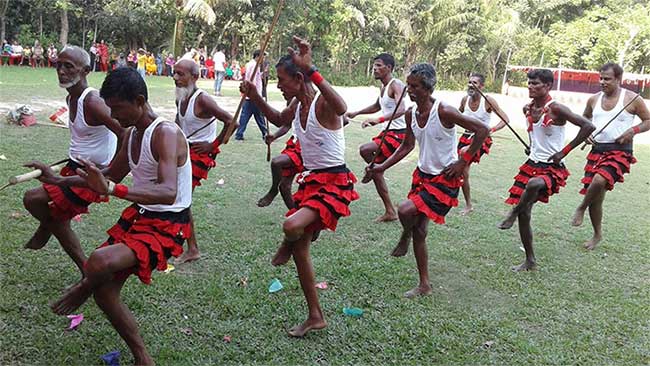What is lathi stick?
The lathi sticks were used by British colonists to suppress the independence movement in India, and continue to be used by Indian security forces during protest crackdowns.
Lathi sticks were used by British colonists in India in the late 19th century to deal with civil disobedience and nonviolent resistance movements in the empire's largest colony. Since the 1920s, when the protest movement spread with the marches attracting hundreds of thousands of people, the use of lathi sticks gradually became popular.

Lathi sticks are a legacy of the British colonial regime.
The British government at the time also had a number of instructions on how to use lathi sticks, with a number of moves such as "jabbing" ie hitting the abdomen, or "cutting" as a blow to the opponent's neck and head. "The lathi sticks are a legacy of the British colonial regime. There is clear historical evidence that the freedom warrior Lala Lajpat Rai (a hero in the Indian national liberation movement) died for the owl. beat with lathi sticks in the head during an anti-colonial protest, "said Syed Ali Kazim, associate professor from Aligarh Islamic University.
Initially, lathi is a type of stick derived from a weapon used in martial arts in South Asia . In the past, lathi sticks were widely used by warlords to fight the rebellion of the poor, appearing as a symbol of unassailable power. Currently, in addition to equipping security forces, lathi sticks are still used in martial arts, sports, health training.

Lathi sticks are used in martial arts, sports, exercise.
After gaining independence from Britain, the Indian government continued to use lathi sticks as an effective weapon to suppress riots or disperse the protests. Today, the lathi sticks used by Indian security forces are made of two main materials, synthetic resin and bamboo. The Hindu Times quoted New Delhi police as saying the capital's security forces had 85,000 synthetic lathi sticks and 15,000 bamboo sticks.
Although it looks just like a normal cane , a lathi is a weapon that actually deals serious damage . Wounds caused by lathi sticks can be swollen and painful for days. Some cases of fractures, paralysis or even death due to the wound of lathi sticks.
- Selfie stick was born 88 years ago?
- Gum does not stick and self-destruct
- Use a non-stick pan properly to protect your health
- Your tongue will stick to the cold metal
- Video: Why is Teflon so good at sticking?
- Non-stick pan causes aging in women
- Anti-stick and development of children
- Non-stick gum
- Using a non-stick pan may have cancer
- Anti-stick substances on kitchenware increase cholesterol
- Hazards from non-stick pans
- Successful non-stick coating repels all bacteria
 'Fine laughs' - Scary and painful torture in ancient times
'Fine laughs' - Scary and painful torture in ancient times The sequence of numbers 142857 of the Egyptian pyramids is known as the strangest number in the world - Why?
The sequence of numbers 142857 of the Egyptian pyramids is known as the strangest number in the world - Why? History of the iron
History of the iron What is alum?
What is alum?